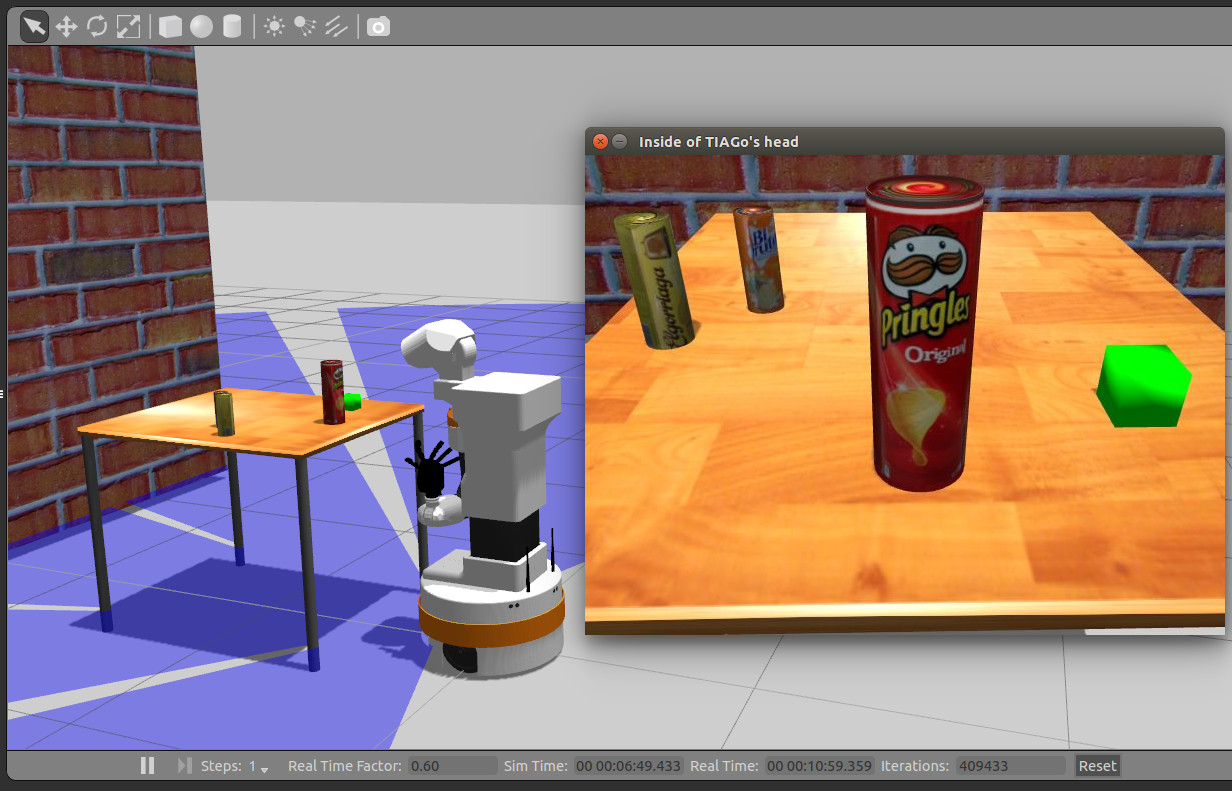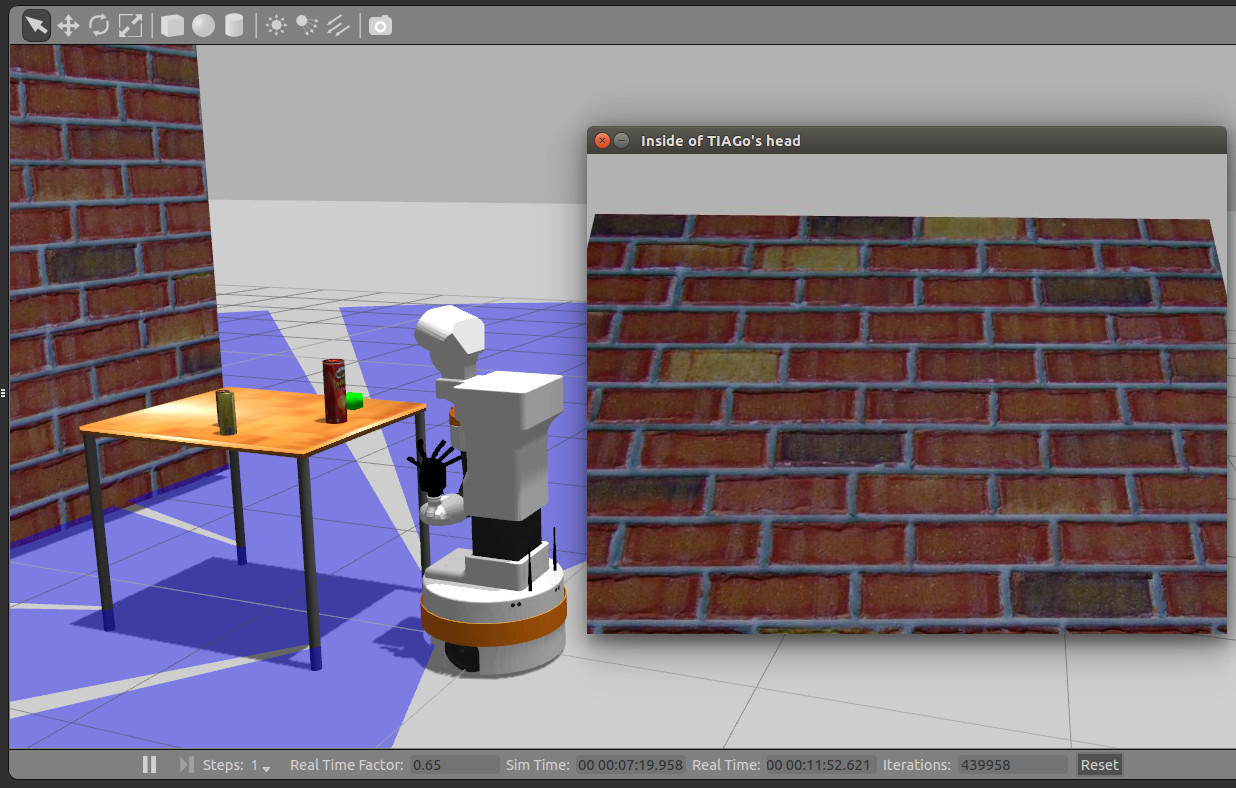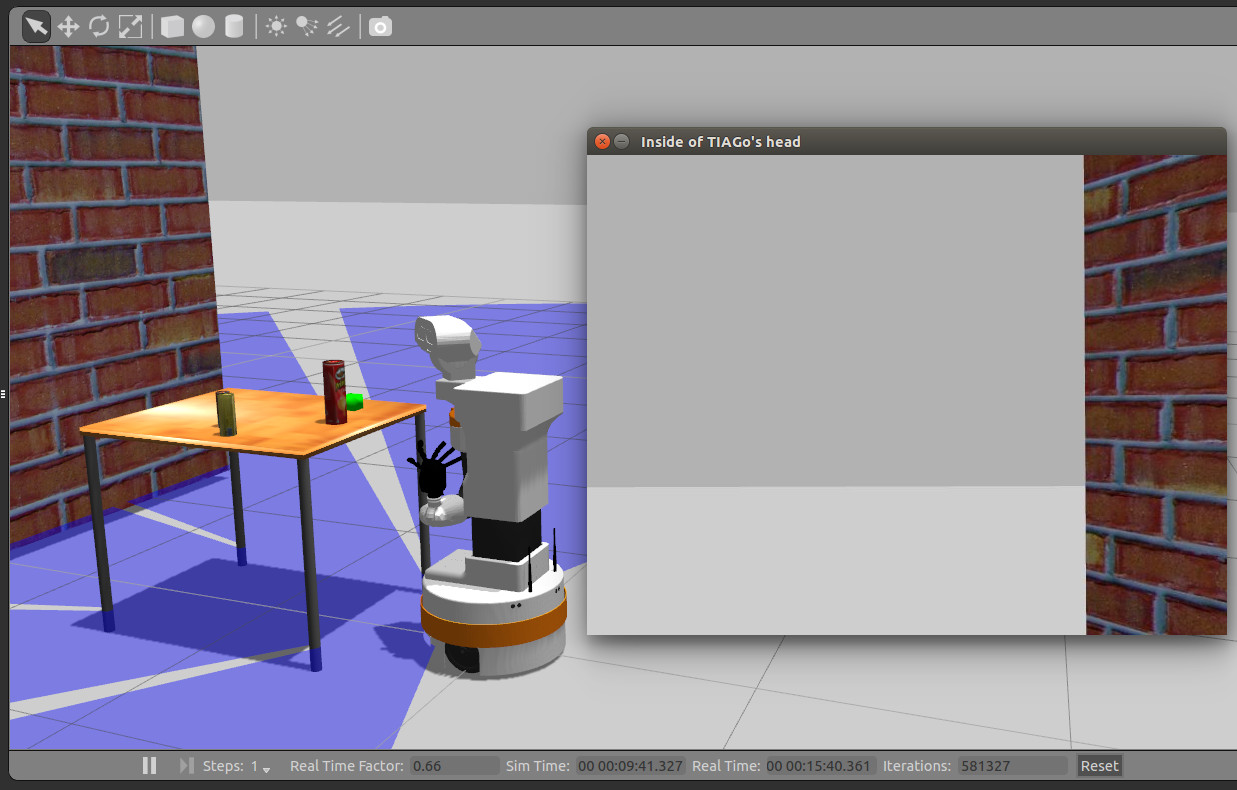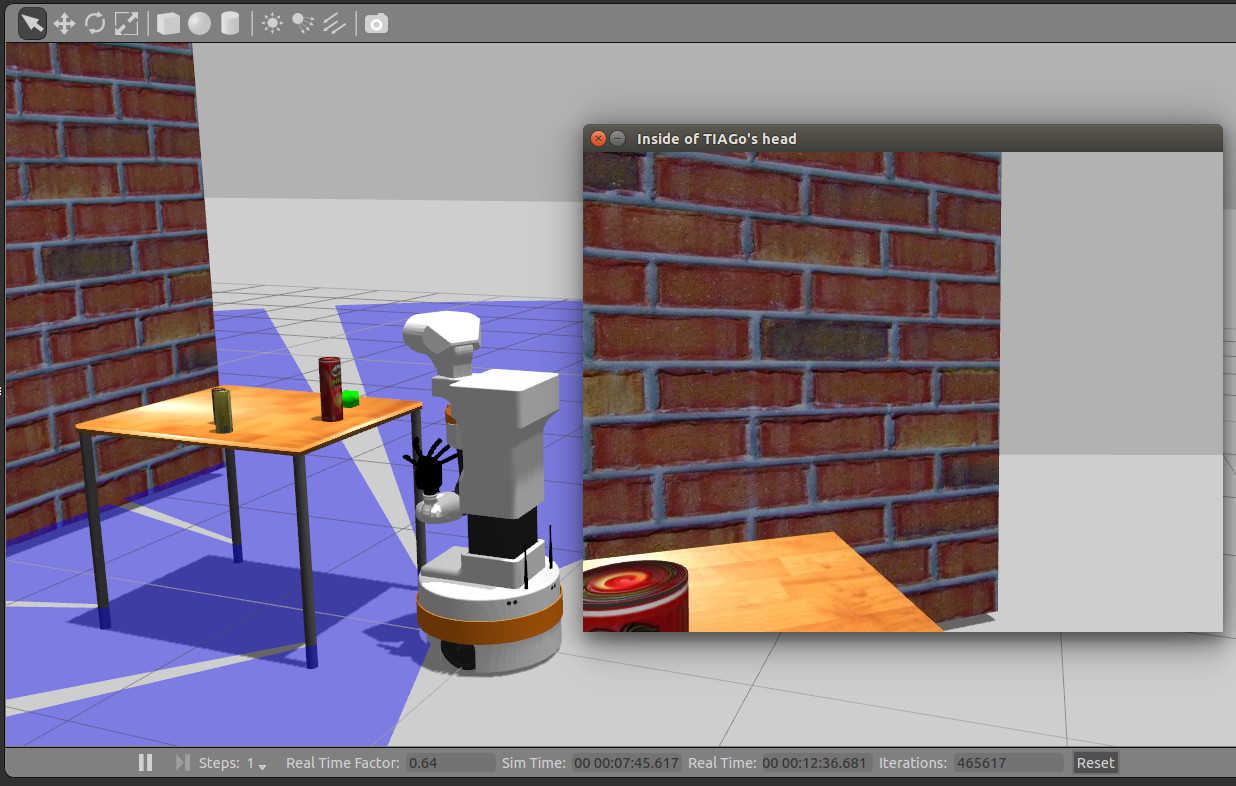Author: Jordi Pages < jordi.pages@pal-robotics.com >
Maintainer: Jordi Pages < jordi.pages@pal-robotics.com >
Support: tiago-support@pal-robotics.com
Source: https://github.com/pal-robotics/tiago_tutorials.git
| |
Head control
Description: Example on how to move TIAGo's head using an action that makes the robot look to a given direction.Keywords: joint, trajectory controller, rqt_joint_trajectory_controller
Tutorial Level: BEGINNER
Next Tutorial: Play back pre-defined upper body motions
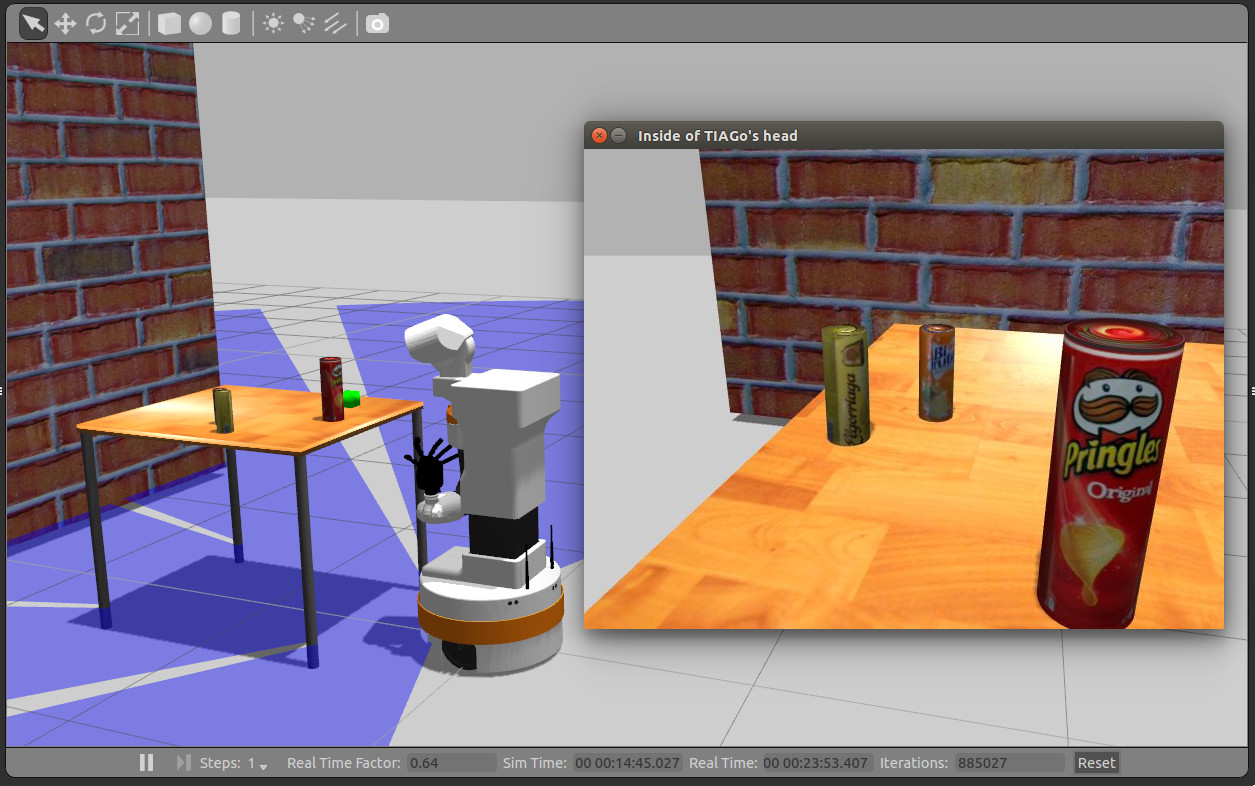
Contents
Purpose
This tutorial shows how to use the head action to move the head of TIAGo. The action can be used to make the robot head to look at any point expressed in any frame.
Pre-requisites
First make sure that the tutorials are properly installed along with the TIAGo simulation, as shown in the Tutorials Installation Section.
Execution
Open two consoles and source the public simulation workspace as follows:
cd /tiago_public_ws/ source ./devel/setup.bash
Launching the simulation
In the first console launch for example the following simulation
roslaunch tiago_gazebo tiago_gazebo.launch end_effector:=pal-hey5 public_sim:=true world:=look_to_point
Gazebo will show up with TIAGo in front of a table with objects.
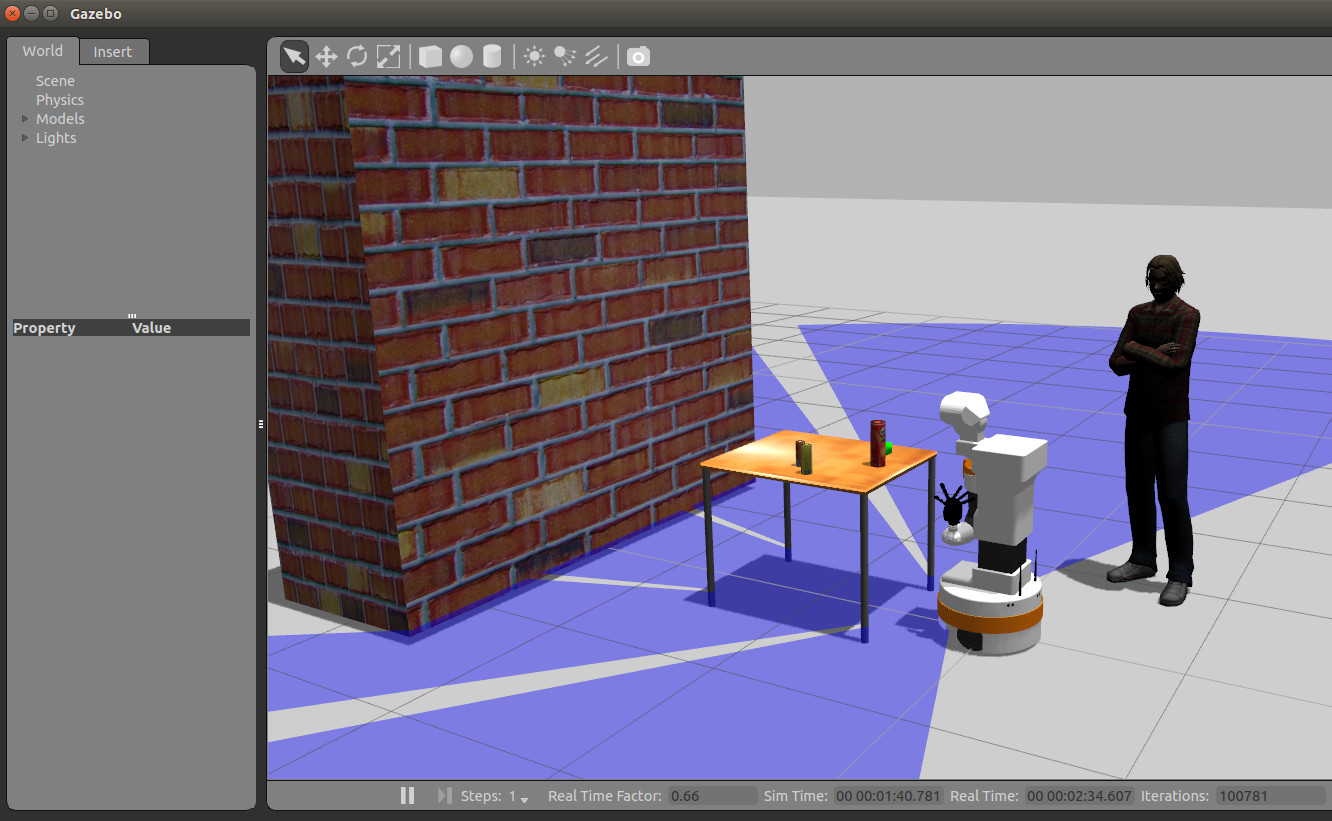
Running the example of C++ action client
An example of C++ node using a head action client is given in tiago_tutorials/look_to_point/src/look_to_point.cpp.
In order to run the node write the following instruction in the second console
rosrun look_to_point look_to_point
the node will subscribe to the following topics:
* /xtion/rgb/camera_info * /xtion/rgb/image_raw
The first topic contains the instrinsic parameters of the camera and the second one the rgb image from the RGBD camera of TIAGo's head.
The rgb image will be shown in a window that will show up.
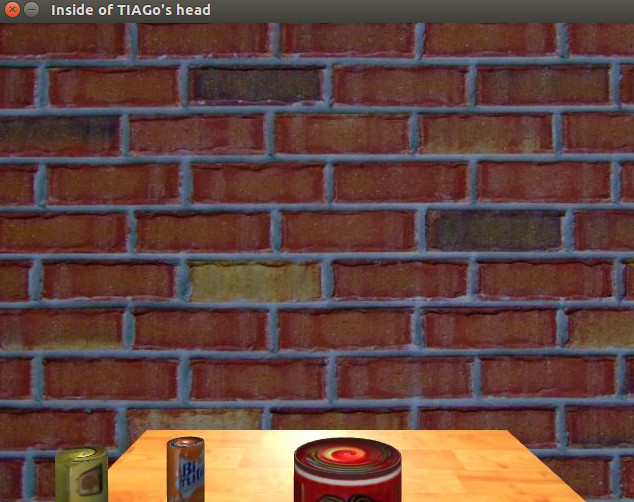
By clicking on any pixel of the image the robot will move its head in order to look at that point. With this we can easily lower or raise the head, look right or leftwards, etc.
